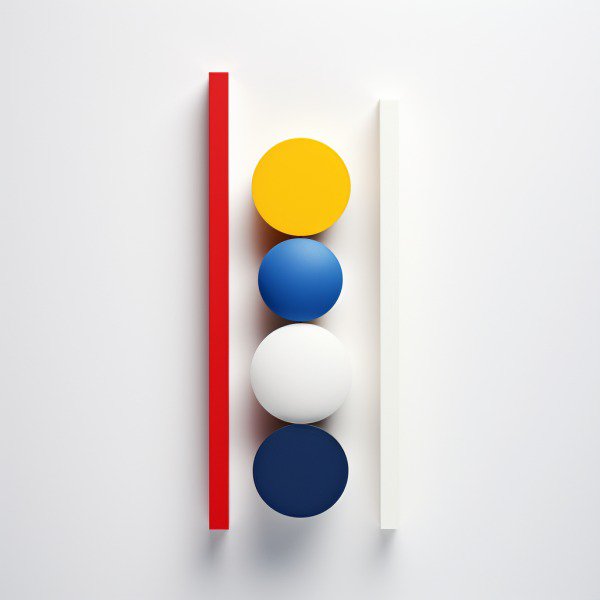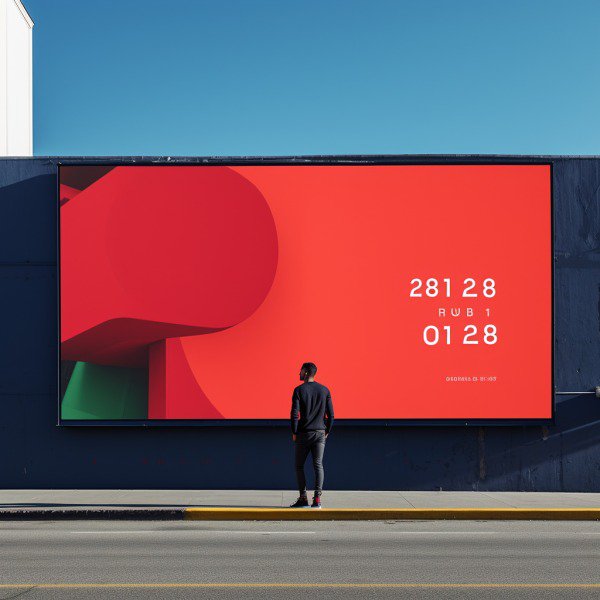Table of Contents:
- The Importance of Soft Skills in Product Design
- The Role of Communication in Product Design
- Critical Thinking in Design
- Design Thinking: A Vital Hard Skill
- Empathy in Design Thinking
- The Power of Integrative Thinking and Optimism
- The Significance of UI Design Skills
- Principles of Effective Screen Layouts
- UX Research in Informing Design Decisions
- Techniques in UX Research
- Making Sense Of The Data: From Insights To Actions
- Information Architecture in Product Design
- Key Elements of Information Architecture
- Proficiency in Design Software
- The Powerhouse Trio: Sketch, Adobe XD, and Figma
- Beyond Interface Design: InVision Studio & Principle for Animation
- Wireframing: The Backbone of Product Design
- FAQs in Relation to Product Design Skills: What Hiring Companies Are Looking for
- What skills do you need to be a product designer?
- What to look for when hiring a product designer?
- Do companies hire product designers?
- How do I get into product design with no experience?
- Conclusion
Ever wondered what makes a product designer truly stand out? What skills are hiring companies actually hunting for?
Imagine this – you’re in a room, filled with brilliant ideas and buzzing energy. Your mind is a canvas of creativity. Contemplate the larger scope.
Navigating with Product Design Skills
Think about communication – it’s like glue that holds everything together. And critical thinking – your sword against design challenges. These soft skills can’t be overlooked.
You’ve also got hard-hitting abilities up your sleeve: Design Thinking, UI design prowess, UX research expertise… All playing their part in creating captivating user experiences.
Mastery over software tools and understanding information architecture form another crucial piece of the puzzle.
Sounds intriguing right? Buckle up because we’re about to dive deep into these must-have product design skills!
The Importance of Soft Skills in Product Design

Product design isn’t just about having an eye for aesthetics or being proficient with the latest design software. It’s also about a designer’s soft skills, which are crucial to their effectiveness and success.
The Role of Communication in Product Design
Communication is at the heart of product design. When designers can clearly express their ideas and understand others’ perspectives, they align designs better with project goals and stakeholders’ expectations.
A study revealed that 70% of mentors believe communication tops the list when it comes to essential soft skills for designers. DesignBetter.Co
This stat underlines how valuable clear communication is within a team setting where everyone must work together towards a common vision. Misunderstandings could lead to mistakes, missed deadlines, and conflicts – none of which any startup wants.
Critical Thinking in Design
In product design, critical thinking means analyzing user needs effectively while making informed decisions that drive solutions. It helps identify problems early on before becoming costly oversights later down the line.
A surprising 62% percent rate critical thinking as the second most important skill needed by product designers (source). This illustrates why critical thinking is vital not only for resolving issues but also for devising creative products that set them apart from their rivals.
With these stats taken into account (and there were many more.), we see why such skills matter greatly beyond technical expertise.
Remember those childhood puzzles? Well think back: What good was finding all the puzzle pieces if you couldn’t figure out where they fit together? Similarly, what good are hard skills if you can’t communicate effectively or think critically to put those skills into action?
The role of soft skills in product design isn’t just some trendy topic discussed at hipster designer meetups. It’s the backbone of effective product design and a crucial aspect that startups should look for when hiring designers.
But hey, we’re not suggesting you ditch technical skills altogether. That’d be like asking an artist to overlook
Key Thought:
Product design isn’t just about looks and mastering software, it’s also about the soft skills. Good communication is key to make sure designs match up with project goals – 70% of mentors agree on this. Critical thinking helps too – it lets you understand user needs better and make smarter decisions. This is a skill that 62% highly value. Don’t forget: Hard skills are important, but they’re not everything.
Design Thinking: A Vital Hard Skill
When it comes to product design, hard skills like proficiency in software and a solid understanding of UX principles are crucial. But there’s one skill that sits at the top of the list: design thinking. More than just a popular term, design thinking is an approach to problem-solving that places the user in the spotlight.
IDEO U defines this as “an iterative process in which we seek to understand the user, challenge assumptions, and redefine problems.” It’s considered so important that it ranks as the most vital hard skill for product designers.
Empathy in Design Thinking
The first step towards effective design thinking lies in empathy. Empathy lets us tap into our users’ needs and feelings—providing invaluable insights about what they want from your product. So how do you cultivate empathy? By getting close to your audience through research methods such as interviews or surveys.
This deep dive helps identify pain points early on so we can fix them before any code gets written—a far more efficient (and less costly) way of working.
You might be surprised by some findings during these sessions but remember—the end goal is not only to make products easier for people but also more delightful. That’s where integrating other key elements like integrative thinking and optimism come into play.
The Power of Integrative Thinking and Optimism
To innovate effectively using design thinking requires two additional components – integrative thought processes paired with optimism. Integrative thinkers embrace complexity rather than shy away from it—they look beyond traditional solutions while maintaining a positive outlook throughout their explorations.
This doesn’t mean blindly ignoring potential pitfalls or challenges. Instead, it’s about acknowledging them and using these insights to fuel creative solutions that drive your product forward. A pessimist may perceive a barrier as an insurmountable issue, while an optimist could see it as an opportunity to craft something novel—something even better.
And guess what? Optimism is contagious. When you bring this positive energy into the design process, others pick up on it too. This collaborative spirit can lead not only to more innovative designs but also create stronger bonds within your team.
Key Thought:
Design thinking, a user-centered approach to problem-solving, tops the list of vital hard skills in product design. It starts with empathy—understanding users’ needs through research like interviews or surveys—to identify and fix issues early on. Alongside this, embracing complexity (integrative thinking) and maintaining optimism fuels creativity while strengthening team bonds.
The Significance of UI Design Skills
When it comes to crafting digital products, UI design skills are not just a ‘nice-to-have’ but an absolute necessity. These abilities let designers create visually compelling and functional screen layouts that help guide users smoothly through their journey.

Principles of Effective Screen Layouts
An effective screen layout isn’t merely about making things look pretty; it’s about creating visual order and coherence. Creating a visually intuitive experience for the user is key to an effective screen layout.
Adhering to certain rules is essential for a successful layout. First up is balance: the even distribution of elements on your screen ensures stability and structure in your design. Whether you’re using symmetrical or asymmetrical balance depends on what kind of mood or message you want to convey with your design.
Next, we have contrast which can be used for highlighting key parts within your interface – guiding users towards specific actions or areas within the app or website. Learn more about these principles here.
- Hierarchy: This refers to arranging elements by importance, either by size, color intensity, positioning etc., so as soon as someone looks at our site/app they instantly know where to focus their attention first.
- Rhythm: Repeating certain patterns creates rhythm in designs – bringing comfort and familiarity while browsing through different screens/pages.
- Framing: Similar like photographs get framed; framing helps direct attention towards desired content/place keeping rest backgrounded out subtly yet effectively.
- Mood boards & Style Guides: Aesthetics play a vital role in influencing users’ mood and perception. Mood boards & style guides are instrumental to establish the visual language of your product.
So, as you can see, these principles aren’t just about aesthetics; they have a direct impact on user behavior and interaction with your digital products.
Actually,
Key Thought:
UI design skills are essential for crafting engaging digital products. They enable designers to create functional, visually appealing screen layouts that guide users intuitively. This involves understanding and applying principles like balance, contrast, hierarchy, rhythm, and framing. Additionally, mood boards & style guides help establish the product’s visual language which influences user behavior.
UX Research in Informing Design Decisions
UX research holds a significant place when it comes to understanding user goals and making design decisions. But why is that? Let’s break it down.
Techniques in UX Research
The magic of UX research lies within its diverse techniques. These methods help us delve into the psyche of our users, giving us insights about their behavior and preferences. A technique as simple as user interviews, for instance, can offer valuable information on how users interact with your product.
User surveys, another widely used method, let you reach out to more people at once while getting quantitative data that helps identify patterns and trends among your users’ needs and behaviors.
A little more techy but no less effective is the use of analytics tools. They track various aspects like click-through rates or time spent on pages which give designers a glimpse into user habits. Here are some tool suggestions for all the nerds out there.
All the various methods allow researchers to acquire both quantitative (the ‘what’) and qualitative (the ‘why’) information regarding user behavior. This way we don’t just get numbers; we understand stories behind those numbers too.
Making Sense Of The Data: From Insights To Actions
An important part of UX research isn’t just collecting data – it’s making sense of this data so that it informs design decisions effectively. For this, data analysis is key. By looking for patterns and trends in the data collected, researchers can make informed recommendations to designers.
Even simple tweaks, like shifting a button, or bigger tasks, like overhauling a user flow can make a difference. But remember, every choice should be driven by UX research insights. After all, we’re aiming to create designs that
Key Thought:
UX research, with its varied techniques like user interviews, surveys and analytics tools, offers invaluable insights into users’ behaviors and preferences. These methods let us understand not just ‘what’ the data is saying but also the ‘why’. This understanding helps in making effective design decisions – whether it’s a small tweak or an entire overhaul.
Information Architecture in Product Design
If you’ve ever had difficulty navigating a website or app, then you have encountered the realm of information architecture. Information architecture (IA) is like the backbone of a digital product; it’s all about organizing and structuring information effectively.
A well-structured IA can make using an app feel smooth and intuitive. On the other hand, poor IA could leave users lost and frustrated. In essence, an effective information architecture can ensure users reach their destination quickly and with minimal hassle.
Key Elements of Information Architecture
The foundation of effective information architecture lies in three key elements: navigation systems, labeling systems, and search systems. Let’s delve more into these crucial components:
Navigation Systems
The navigation system, also known as ‘menus’, guides users through your site or app like a roadmap. The goal here is simple: Make sure folks don’t lose their way while exploring what you offer.
You may think designing menus are straightforward – list out options under categories right? But oh no. It involves serious thought process – thinking from user perspective on how they would group related items together.
Labeling Systems
We see labels everywhere,, but when it comes to digital products – it gets tricky. A labeling system represents data organization through words (labels), giving context to navigational elements such as buttons or links on a webpage/app interface.
Just imagine having button with icon only & no text — would be confusing isn’t it? Hence labels play vital role in enhancing usability by making navigation self-explanatory.
Search Systems
Ever been to a site with no search option? Painful, isn’t it. Search systems are crucial for large websites or complex apps. They help users locate specific content quickly when navigation alone doesn’t cut it.
The real deal isn’t just having a search box, but how well it pulls up relevant results.

Key Thought:
Getting a grip on information architecture (IA) is key in product design—it’s like the spine of your digital product. Success rides on three main things: slick navigation systems to smoothly steer users; straightforward labeling for quick data organization and context; and fast search systems that pinpoint content right away. These pieces join forces to let your users move around with ease.
Proficiency in Design Software
As a designer, it’s essential to have an understanding of design software; this is just one aspect that should not be ignored. One of those facets that cannot be overlooked? Proficiency in design software. From creating wireframes to building prototypes, mastery over the right tools can mean the difference between success and failure.
The Powerhouse Trio: Sketch, Adobe XD, and Figma
Sketch, Adobe XD, and Figma. This trio forms the Holy Grail of interface design software today. These platforms allow designers to bring their ideas into reality with precision and efficiency.
Adeptness at using these programs helps you whip up high-quality designs quickly. But it also gives you more than just speed; it empowers you with flexibility too. Need to adjust your prototype based on user feedback? With proficiency in these tools, making changes becomes as easy as pie.
Beyond Interface Design: InVision Studio & Principle for Animation
We’re not stopping at static screens though. To truly breathe life into our products, we need animation—and for that there’s InVision Studio and Principle.
InVision Studio allows us to create interactive interfaces while maintaining consistency across all design elements. With Principle, we can animate individual components with ease and precision. Both these tools allow us to ensure that our designs aren’t just pretty—they’re also functional and engaging.
Wireframing: The Backbone of Product Design
Before jumping into the deep end of prototyping, it’s crucial to get your wireframes right—consider them the skeleton of your product design. Tools like Balsamiq, Axure RP, or even Sketch can help you create effective wireframes quickly.
The secret sauce? Proficiency.
FAQs in Relation to Product Design Skills: What Hiring Companies Are Looking for
What skills do you need to be a product designer?
To be a product designer, you’ll need soft skills like communication and critical thinking. Also, hard skills such as design thinking, UI/UX expertise, and UX research abilities are essential.
What to look for when hiring a product designer?
When hiring, look for someone with strong communication and collaboration abilities. Designers should also show proficiency in software tools used for wireframing and prototyping.
Do companies hire product designers?
Absolutely. Companies often seek skilled product designers who can understand user needs and translate them into functional designs.
How do I get into product design with no experience?
To break into the field without prior experience, start by learning fundamental concepts of UI/UX. Building personal projects or doing internships will help showcase your competence too.
Conclusion
Product design skills are not just about being creative. It’s a fusion of soft and hard skills that hiring companies are looking for.
Communication, critical thinking, collaboration – these soft skills form the foundation. They’re your secret weapons in navigating project goals and stakeholders’ expectations.
The magic of Design Thinking can’t be understated either. Empathy, integrative thinking, optimism – all keys to unlocking innovative solutions.
Your UI design abilities help create effective screen layouts while UX research guides you towards user-centric designs.
Mastery over software tools? Essential! Information architecture knowledge? Crucial!
It’s a complex tapestry indeed but one worth weaving. Because at the end of it all lies the masterpiece: A product that truly resonates with users!



